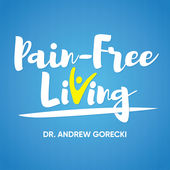
Age-Related Changes and Incontinence: What to Expect and How to Prepare
As a pelvic floor specialist, I frequently address concerns related to age-related changes in bladder health and incontinence. It's an often-misunderstood topic, shrouded in myths and stigma, yet it's a natural part of aging. In this blog, we will explore the effects of aging on bladder health, the types of incontinence you might encounter, and proactive strategies to maintain bladder function and manage incontinence effectively as you age.
With age, changes in the urinary system are common. The bladder muscles may weaken, and the bladder's capacity to store urine can decrease. These changes can lead to increased frequency of urination, urinary urgency, and various types of incontinence.
Types of Age-Related Incontinence:
1. Stress Incontinence: This occurs when physical movement or activity — such as coughing, sneezing, or exercising — puts pressure (stress) on your bladder, causing leakage.
2. Urge Incontinence: Often referred to as overactive bladder, this involves a sudden, intense urge to urinate followed by an involuntary loss of urine.
3. Mixed Incontinence: A combination of stress and urge incontinence.
4. Functional Incontinence: Due to physical or mental impairment, individuals might have trouble reaching the toilet in time.
Why Does Incontinence Occur with Aging?
Several factors contribute to incontinence in older adults:
1. Muscle Weakness: The pelvic floor muscles, which support the bladder and urethra, may weaken with age.
2. Prostate Issues in Men: An enlarged prostate can obstruct the urethra, leading to difficulty in emptying the bladder completely.
3. Menopause in Women: Reduced estrogen levels after menopause can weaken the urethra and bladder lining.
4. Mobility Issues: Conditions like arthritis can make it difficult to reach the toilet quickly.
5. Neurological Disorders: Diseases such as Parkinson’s or stroke can disrupt nerve signals involved in bladder control.
Proactive Measures to Maintain Bladder Health:
1. Pelvic Floor Exercises: Regular pelvic floor exercises, can strengthen the muscles that control urination, significantly reducing the risk of incontinence.
2. Bladder Training: Bladder training involves delaying urination after feeling the urge to go and setting a schedule for bathroom visits. This technique can be effective for urge incontinence.
3. Diet and Fluid Management: Stay hydrated, but limit bladder irritants like caffeine and alcohol. Eating a balanced diet rich in fiber can prevent constipation, which can exacerbate incontinence.
4. Regular Physical Activity: Staying active promotes overall health and maintains mobility, which can indirectly support bladder health.
5. Manage Chronic Conditions: Proper management of conditions like diabetes or hypertension can mitigate their impact on bladder function.
Lifestyle Adjustments for Managing Age-Related Incontinence:
1. Scheduled Toilet Trips: Making regular trips to the bathroom, regardless of the urge to urinate, can prevent accidents.
2. Incontinence Products: Products like absorbent pads or protective underwear can provide security and comfort.
3. Accessible Restrooms: Modify your living space to ensure easy access to restrooms. Night lights can be helpful for nighttime trips.
Emotional and Social Implications:
Incontinence can have emotional and social impacts. It's crucial to maintain open communication with family and healthcare providers. Support groups or counseling can provide additional emotional support.
Seeking Professional Help:
1. Consult a Pelvic Floor Specialist: A specialist can offer personalized advice, exercises, and treatment plans tailored to your needs.
2. Regular Medical Checkups: Regular checkups can help identify and manage conditions that might contribute to incontinence.
3. Medication and Surgical Options: In some cases, medications or minimally invasive surgical options can be considered.
Aging and incontinence don’t have to diminish your quality of life. By understanding the changes your body goes through and taking proactive steps, you can manage incontinence effectively. Remember, incontinence is a common issue, and seeking help is a sign of strength, not weakness. Embrace these later years with confidence, knowing that there are many strategies and resources available to support your bladder health.
We periodically offer a Free Incontinence Relief Workshop. Get more information here: Incontinence and Pelvic Pain Relief Workshop (nomorepads.com)
Or check our free Incontinence and Pelvic Pain Relief Course: My Core Floor | Superior Physical Therapy (thesuperiortherapy.com)



